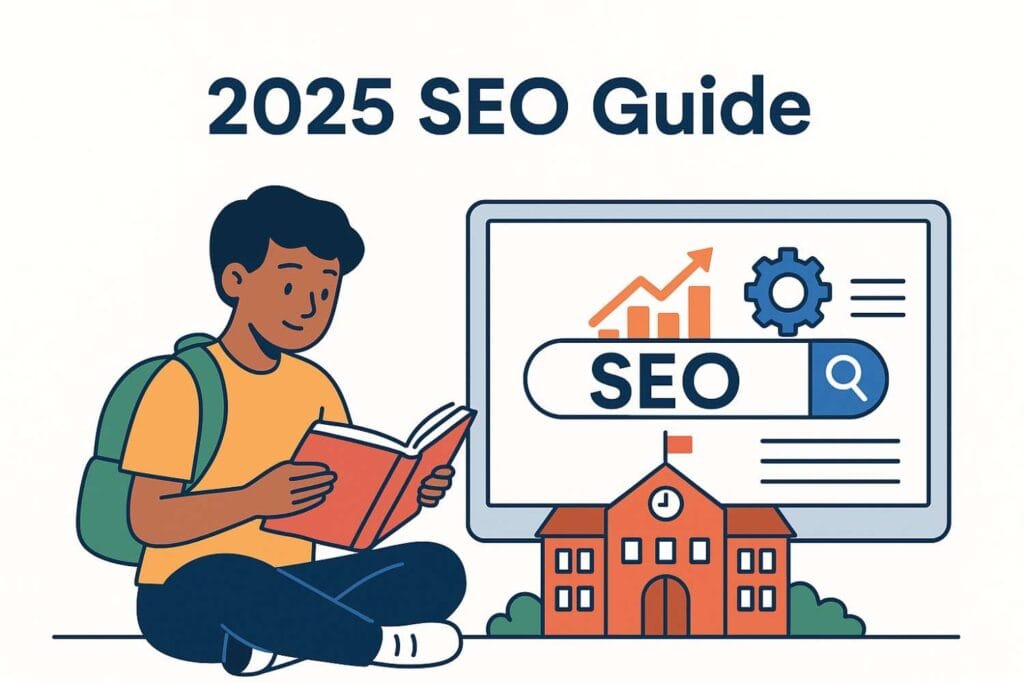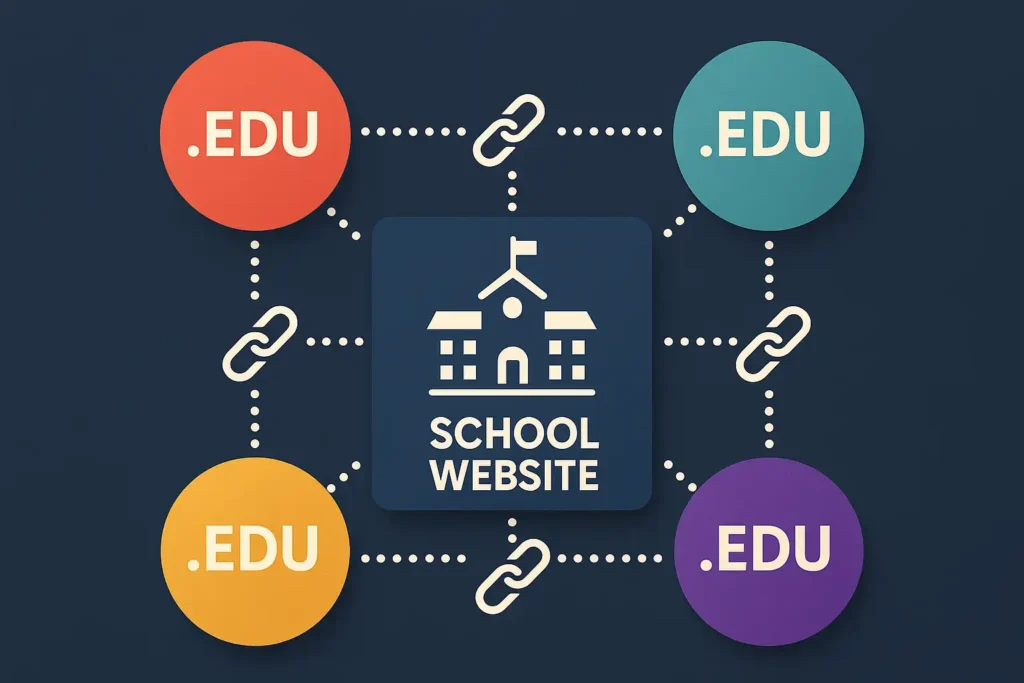
In 2025, getting your school’s website to rank high on Google isn’t just about having a nice design or writing a few blog posts. It’s about authority. And one of the most powerful signals of trust and authority in the eyes of Google?
Backlinks.
Specifically, EDU backlinks — links from educational (.edu) websites — carry exceptional weight in search engine algorithms. But most schools, colleges, and educational service providers either overlook backlinks or use outdated, spammy methods that do more harm than good.
This blog will show you why backlinks still matter more than ever, how they affect school SEO, and most importantly, how to get high-quality, safe, and strategic backlinks (including EDU links) in 2025 — without buying shady lists or hiring expensive agencies.
Whether you’re a school admin, digital marketer, or SEO beginner working with educational websites — this is your complete, white-hat guide to backlink building that works today.
For a full breakdown of school SEO strategy, see our 2025 SEO for Schools Guide.
What Are EDU Backlinks and Why Do They Matter?
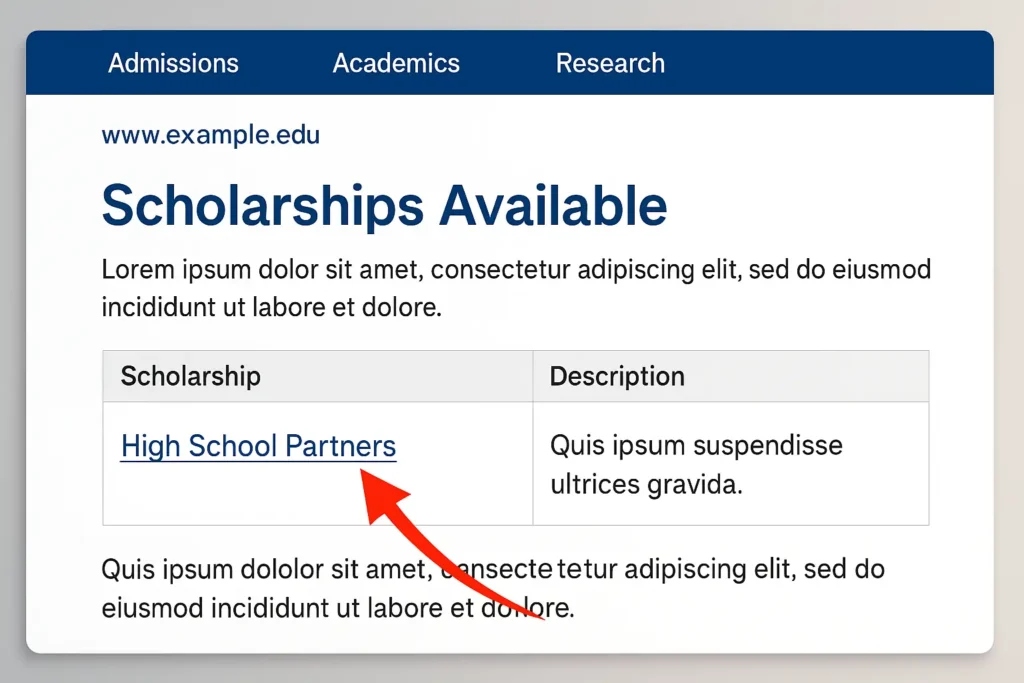
An EDU backlink is simply a link that comes from a website with a .edu domain — typically educational institutions like universities, schools, colleges, or research foundations. Because these sites are trusted by default and subject to strict editorial control, Google treats backlinks from them as highly credible and authoritative.
For schools or educational platforms, earning these backlinks isn’t just a bonus — it’s a strategic SEO advantage. When a reputable .edu site links to your school’s website, Google interprets it as a signal of relevance and trust, which can significantly boost your search engine rankings, especially in local and educational search queries.
What sets EDU backlinks apart from ordinary ones is their domain authority. A backlink from an education-based domain often carries more SEO weight than ten from low-quality directories or unrelated blogs. However, because of this, they’re also harder to get — and that’s exactly why they’re worth pursuing.
The Role of Backlinks in School SEO Performance

Most school websites focus on uploading notices, event updates, and basic information — but forget the bigger digital picture: search visibility. If your school isn’t showing up on the first page of Google when someone searches for “best schools near me” or “[your city] CBSE school”, it’s likely because your off-page SEO is weak — and that usually comes down to a lack of quality backlinks.
Backlinks are like digital referrals. When other websites link to yours — especially credible sources like educational blogs, parent associations, or local news — it tells search engines that your site is trusted, relevant, and worth showing to users. This improves not only your domain authority, but also your visibility for search terms that truly matter to your community.
In 2025, Google’s algorithm places even more importance on E-E-A-T: Expertise, Experience, Authoritativeness, and Trust. Backlinks are a core trust signal in this system — especially in the education space, where credibility is everything. That’s why every serious school SEO strategy must include a focus on earning organic backlinks.
Backlinks matter, but they work best when combined with a well-optimized website. Here’s how to optimize your school website for SEO.
Are EDU Links Reliable and Safe for Your Website?

There’s a reason why SEO experts treat .edu backlinks like gold — they come from websites that are typically well-established, institutionally managed, and extremely difficult to manipulate. This makes them some of the most trusted and reliable link sources on the internet. But just because a domain ends in .edu doesn’t automatically mean it’s safe — or valuable.
Let’s be clear: not all .edu backlinks are equal. Some universities allow open blog submissions or student forums, which can be exploited by spammers. If Google detects unnatural patterns — such as irrelevant content, over-optimized anchor text, or shady placement on forums — it can ignore the link or, worse, penalize the site that built it. So while EDU links are powerful, they must be earned strategically and ethically.
In the context of school SEO, EDU backlinks are most effective when they are:
- Contextually relevant (e.g., linking to your school’s research, event, or local education initiative)
- Editorially placed (included within trusted content, not comment sections or open directories)
- Topically aligned (from educational or community-focused pages)
Many schools make the mistake of purchasing .edu links from so-called “lists” or bulk backlink providers. This is a shortcut that usually backfires. Google is highly capable of detecting inorganic link patterns — and in education, trust is everything. A single spammy backlink could dilute your website’s credibility more than you think.
If you’re planning a long-term SEO strategy, your goal should be to build backlinks from .edu domains that are actually connected to your school’s activities, partnerships, and content. That’s how you build rankings that last — and authority that compounds.
How to Get High-Quality EDU Backlinks in 2025 (White-Hat Only)
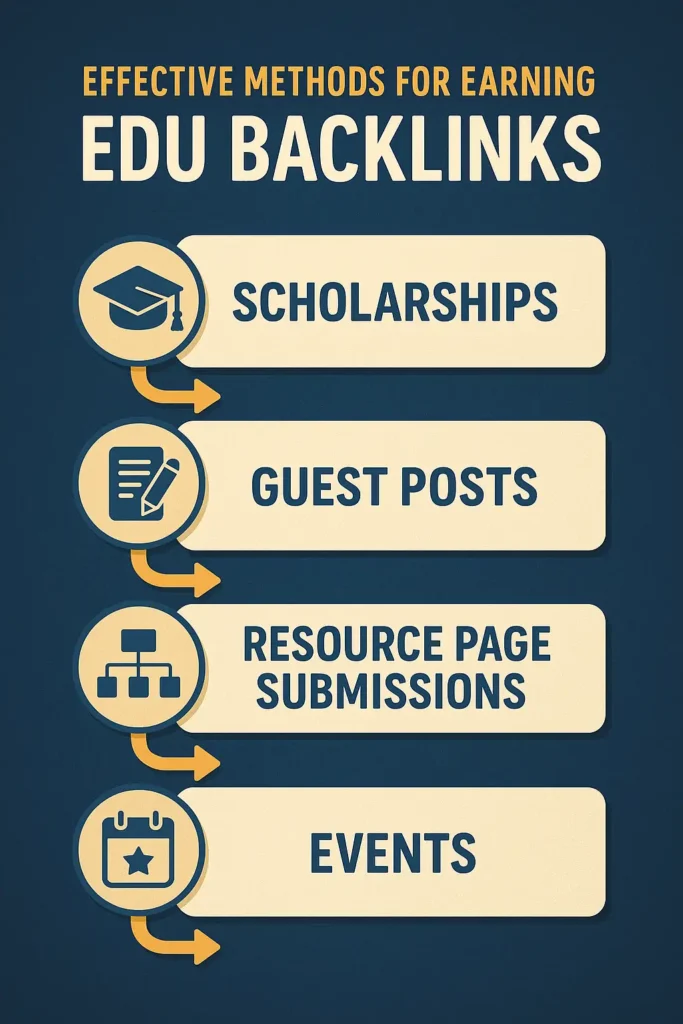
If you’re serious about building long-term SEO success for your school or educational platform, you need to earn backlinks the right way. Forget shady backlink marketplaces and spammy forum posts. In 2025, Google rewards relevance, quality, and authenticity — especially in the education sector. That means your backlink strategy should be white-hat, manual, and value-driven.
Below are the most effective, ethical, and scalable methods to earn .edu backlinks that not only boost rankings — but also build genuine authority in your niche.
1. Partner with Local Colleges and Universities
Establish relationships with nearby academic institutions. If your school co-hosts an event, sponsors a student initiative, or contributes to a university’s newsletter, you can earn a contextual backlink from a .edu domain. This not only strengthens your SEO but also builds community credibility.
2. Offer a Scholarship (Strategically)
This is one of the most common — and still effective — tactics. Create a legitimate scholarship program for students in your area or niche. Then, reach out to colleges and universities that maintain scholarship resource pages. Most will list your scholarship along with a backlink to your site. Make sure your scholarship has genuine value, not just SEO intent.
3. Contribute Guest Posts to EDU Blogs or Student Journals
Many universities have official blogs, academic publications, or student-run media. Offer to write valuable content such as educational insights, career advice, or teaching methods. Ensure your article is relevant, non-promotional, and adds value. A contextual backlink inside an authoritative .edu blog is a major SEO asset.
4. Host or Sponsor Educational Events (Webinars, Seminars, Fairs)
Whenever you sponsor or host a school-centric event — online or in-person — make sure it’s listed on an EDU calendar, student portal, or event page. These backlinks often come from subdomains like events.university.edu, which Google treats with high trust.
5. Get Cited in Academic Research or Case Studies
Schools and ed-tech companies often get cited in research papers, dissertations, or case studies. Contribute useful data, offer a quote, or share a practical use case. These backlinks are editorial gold.
6. Create Link-Worthy Resources (Guides, PDFs, Tools)
Build something useful that professors or students can cite — like a free digital safety guide for schools, a bullying prevention workbook, or a curriculum checklist. Submit it to resource pages on .edu sites.
7. Use Google Search Operators to Find .EDU Opportunities
Search for backlink opportunities using queries like:
- site:.edu “scholarship opportunities”
- site:.edu “write for us”
- site:.edu inurl:resources “education”
This helps you find real EDU pages actively linking to outside sources.
Lastly, always keep your anchor text natural, avoid over-optimization, and track your backlink profile using tools like Ahrefs, SE Ranking, or Google Search Console. Earning just a handful of high-quality EDU backlinks can outperform dozens of low-quality links — and position your school site as a local authority.
EDU Link Building Mistakes to Avoid in 2025
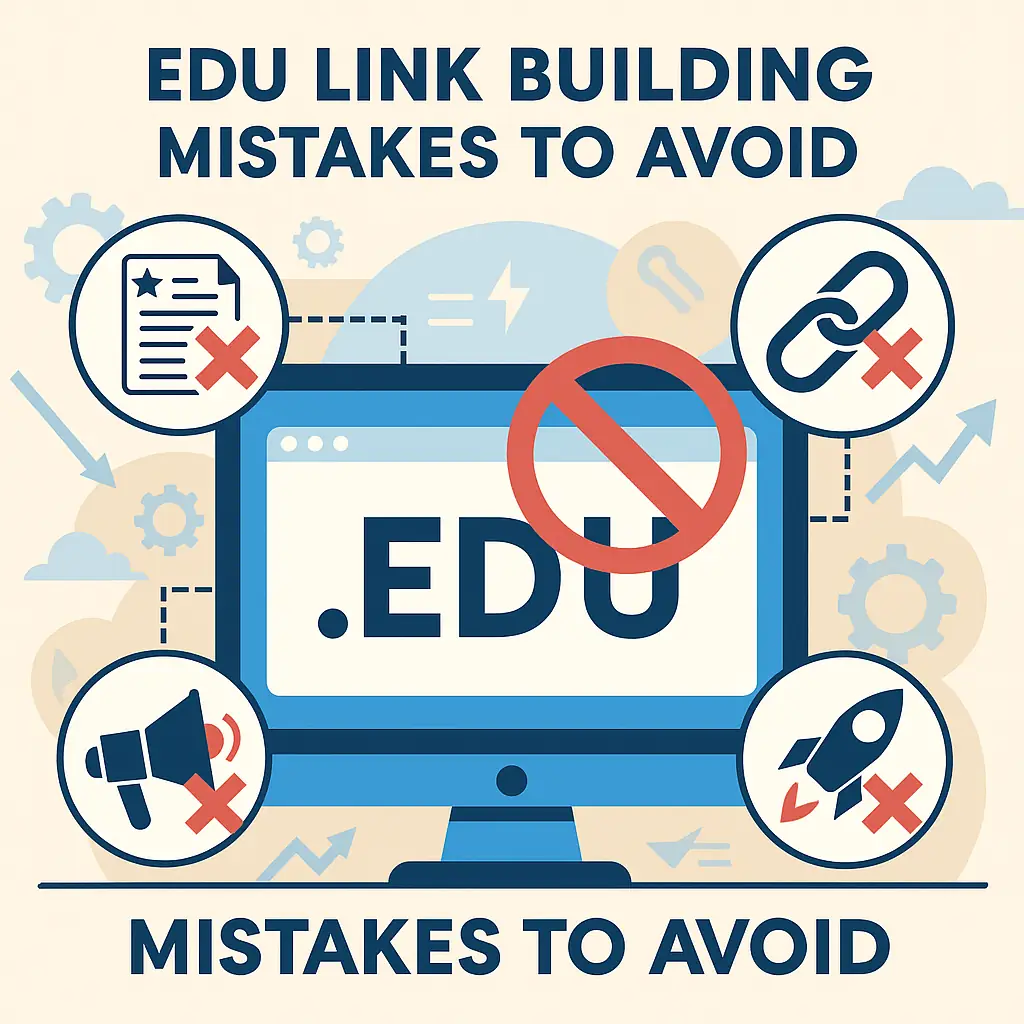
While EDU backlinks can skyrocket your search rankings, they can also backfire if misused. Google is more sophisticated than ever in 2025, and it’s fully capable of detecting manipulative backlink tactics — especially in niches like education, where trust and credibility are non-negotiable.
Buying backlinks or over-optimizing anchor text are just two of many common school SEO errors. See the full list of mistakes schools must avoid.
Here are the most common EDU link-building mistakes schools and marketers make — and how you can avoid them:
1. Buying .EDU Backlinks from Public Lists
There are hundreds of websites claiming to sell access to .edu backlink lists — promising fast SEO gains. But most of these links come from user-generated comment sections, forums, or open-access wikis that Google considers spammy or low quality. Worse, many of these lists are already flagged by search engines. Buying these links is a shortcut to a ranking penalty.
2. Over-Optimizing Anchor Text
Using the exact same keyword-rich anchor text (“best CBSE school in Delhi”) repeatedly is a red flag. Google expects diversity and natural language. Stick to branded anchors (“Delhi Grammar School”), URL-based links, or contextual anchors (“learn more about our admission process”).
3. Publishing Low-Quality Guest Posts
Submitting thin, generic content to student blogs or educational portals just for a link won’t work. Google assesses content quality and context before assigning any SEO value. A weak guest post with no expertise, originality, or relevance may get ignored — or even hurt your site’s trust score.
4. Relying Only on EDU Backlinks
While EDU links are powerful, they shouldn’t be your only source of backlinks. A healthy backlink profile includes a mix of sources: local blogs, news outlets, resource pages, relevant niche sites, and .edu where appropriate. Over-dependence on any one type — even a high-authority one — looks unnatural.
5. Ignoring Backlink Monitoring
Many schools earn great backlinks but never track them. Over time, links can be lost, pages deleted, or anchors changed. Use tools like Google Search Console, Ahrefs, or SE Ranking to monitor your EDU links, disavow toxic ones, and reclaim lost ones. Link management is just as important as link acquisition.
The key takeaway? Don’t chase EDU backlinks. Earn them. Focus on relationships, value, and relevance. That’s how you build a backlink profile Google rewards — not punishes.
How Many Backlinks Does a School Website Really Need?
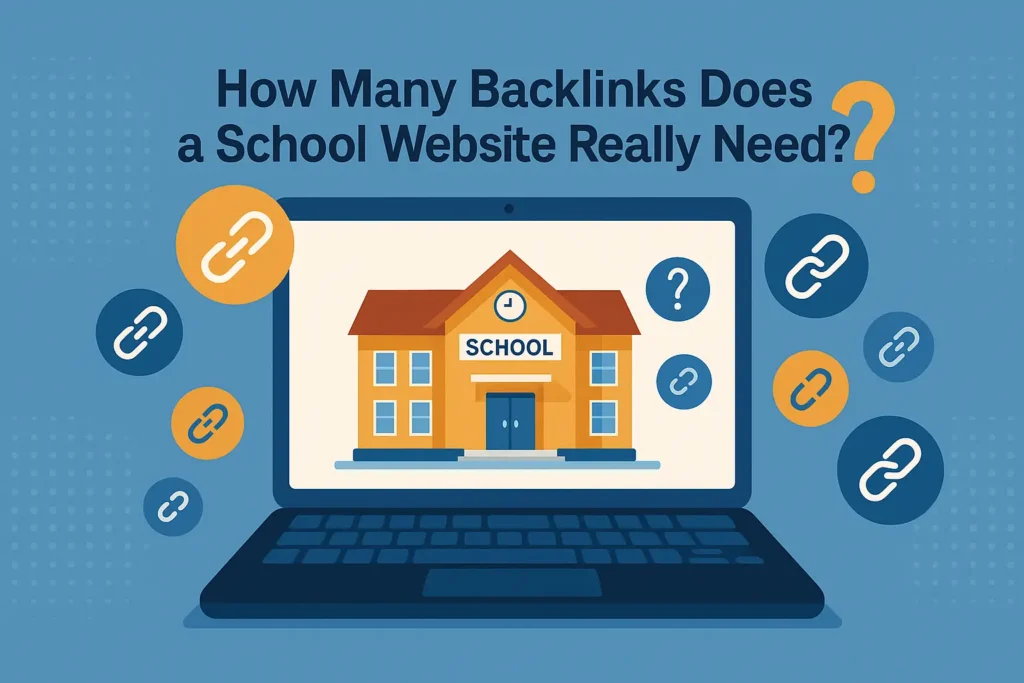
There’s a widespread myth in the SEO world that more backlinks automatically means better rankings. But in 2025, quality far outweighs quantity. For school websites in particular — where relevance and trust are more important than scale — a few high-authority backlinks can outperform hundreds of low-grade ones.
Think of backlinks like recommendations. Would you rather have 500 random people vouch for you, or 5 highly respected leaders in your community? Google operates the same way. It values backlinks from reputable, contextually relevant sources — especially in sectors like education, where accuracy and authenticity matter.
What’s a Healthy Backlink Count for a School Website?

There’s no one-size-fits-all answer, but based on competitive benchmarks:
- A local school can rank well with as few as 10–30 high-quality backlinks from relevant sources (local press, education blogs, government directories).
A national/international school or education platform may need 100+ links, but again, link quality is critical.
If you’re working with a new website, focus first on acquiring:
- 2–5 local citations (directories, news)
- 2–3 .edu backlinks (scholarships, partnerships)
- 3–5 niche blog mentions or press releases
This builds a natural, diverse link profile that Google trusts.
What’s the Ideal Backlink Growth Rate?
Another key mistake is building backlinks too fast. If Google sees a sudden spike from 0 to 100 backlinks in 7 days, it’s a red flag — unless you’ve gone viral organically.
Safe growth benchmarks in 2025:
- 1–5 backlinks/week for new school websites
- 5–10/month for established domains
Maintain consistency over time — SEO is a marathon, not a sprint
How Do You Know Which Links Are Actually Helping?
Use tools like Google Search Console, SE Ranking, or Ahrefs to track:
- Which backlinks pass referral traffic
- Which pages they link to
- Whether they’re indexed
- Their domain rating or trust score
These insights help you double down on the types of backlinks that move the needle.
The bottom line? You don’t need hundreds of backlinks — just the right ones. Prioritize quality, relevance, and earned trust, and your school website will rise naturally in the rankings.
EDU Backlinks vs Other Authority Backlinks
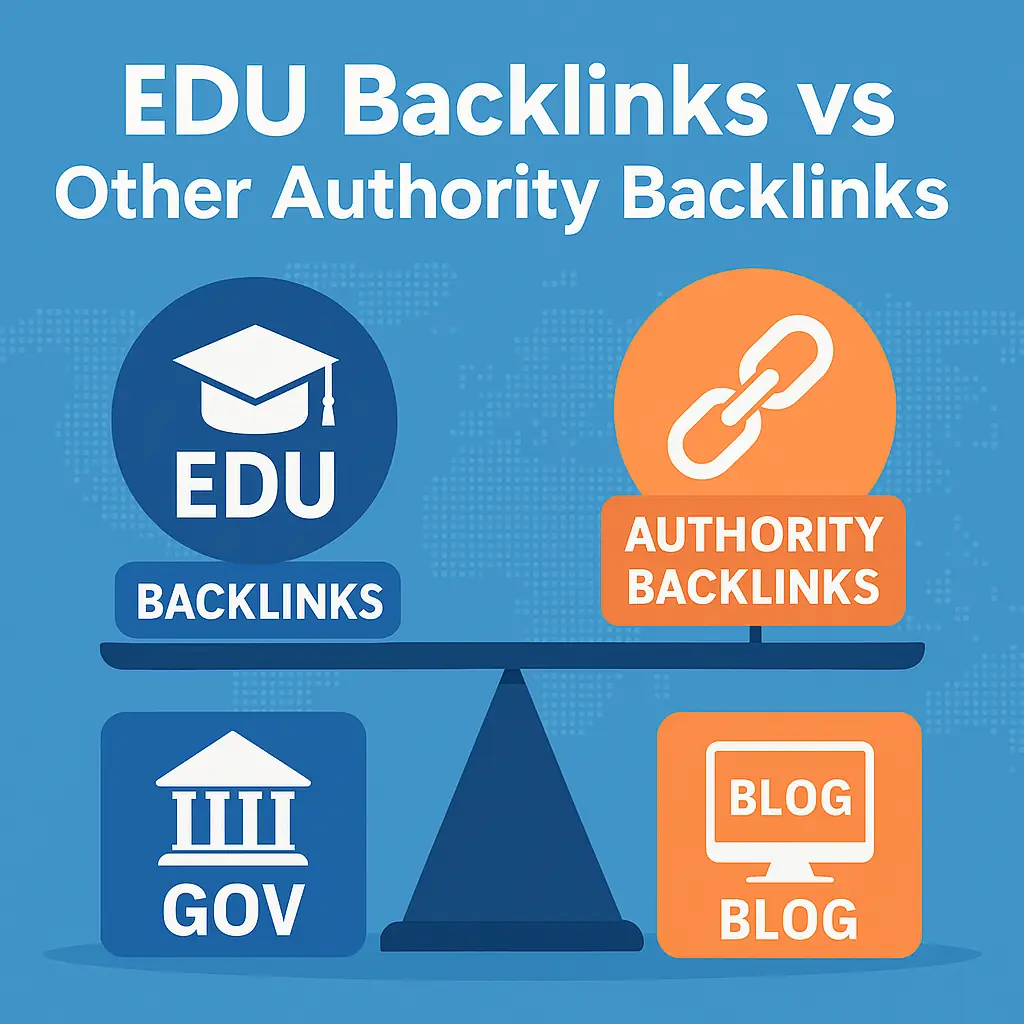
Not all backlinks are created equal — and while EDU backlinks are among the most trusted in the SEO world, they’re just one piece of a strong backlink profile. To truly elevate your school’s domain authority, you need to understand where EDU backlinks stand compared to other high-authority link types.
Why EDU Backlinks Stand Out
EDU domains are:
- Institutional and authoritative: Managed by universities, colleges, and educational bodies.
- Highly trusted by Google: Rarely abused, frequently cited, and algorithmically favored.
- Contextually powerful: Especially relevant for education-based websites and school-related queries.
Because of these traits, Google treats edu links as signals of reliability, academic relevance, and credibility.
How They Compare to .GOV Backlinks
Like .edu, .gov domains carry immense weight due to their government backing. A backlink from a local education department, city program, or state scholarship page can be just as powerful — if not more — in terms of local SEO impact.
Once your website structure is optimized, it’s time to attract attention locally. Don’t miss our actionable guide on how schools can boost local SEO before admissions start
However:
- GOV links are harder to earn (very few content opportunities)
- Less likely to accept resource contributions or external submissions
If you can earn a GOV link, it’s gold — but EDU links are more scalable and accessible.
EDU vs Niche Authority Blogs
Backlinks from respected education blogs, thought leadership platforms, or local press often drive more referral traffic, even if their domain authority is lower than .edu sites.
Pros:
- Easier to earn via content partnerships
- Great for contextual relevance and keyword-focused anchors
Help diversify your backlink profile
Combine EDU links (for trust) + niche blogs (for reach & traffic) to build a complete SEO strategy.
Diversification is the Winning Strategy
Relying only on EDU backlinks can limit your reach and raise red flags. Instead, aim for a diverse backlink portfolio that includes:
- .edu (authority + trust)
- .gov (credibility + local SEO)
- Niche blogs (contextual relevance)
- Local directories (geographic relevance)
- Guest post placements (traffic + anchor control)
EDU backlinks are incredibly valuable — but only when integrated into a well-rounded SEO strategy. Think of them as your foundation, not your entire fortress.
Build Backlinks That Earn Trust, Not Penalties
In 2025, building backlinks is no longer about chasing volume or manipulating algorithms. It’s about earning trust — from Google, from your users, and from your community. And nowhere is that trust more critical than in the education space.
EDU backlinks, when acquired properly, remain one of the most powerful SEO signals available. But as you’ve learned, they must be earned ethically, aligned with your brand, and integrated into a larger white-hat backlink strategy that includes relevance, diversity, and consistent value creation.
Whether you’re a school administrator, an educational consultant, or a digital marketer serving schools — you now have the framework to:
- Understand what makes EDU backlinks powerful
- Avoid common link-building mistakes
- Apply proven methods to earn links that matter
- Measure your progress using the right tools
Remember: SEO is a reputation game. Every backlink is a vote of confidence in your content, your mission, and your website. So build slowly. Build smart. Build with integrity.
And if you’re not sure where to start or want expert help planning your school’s backlink strategy — our team is here to help.
Want a backlink audit for your school website?
Book a free SEO consultation with our team and get personalized insights on how to improve your rankings with safe, scalable, and strategic link-building.
Frequently Asked Questions (FAQs)
Here are some of the most common questions schools, marketers, and SEO beginners ask when it comes to EDU backlinks in 2025:
Q1: What are EDU backlinks in SEO?
EDU backlinks are links from websites that have a .edu domain — typically belonging to educational institutions. Because these domains are highly trusted by Google, backlinks from them carry more authority and can significantly boost your SEO rankings.
Q2: Are EDU backlinks better than other types of backlinks?
In many cases, yes. EDU backlinks are generally more authoritative and trustworthy than most commercial backlinks. However, a well-rounded backlink profile also includes niche blogs, local media, and contextual industry mentions for balance.
Q3: How can a school earn EDU backlinks without paying?
You can earn free EDU backlinks by offering scholarships, contributing to academic blogs, sponsoring student events, or submitting resources to university libraries and .edu resource pages.
Q4: Is it safe to build 100 backlinks quickly for a school website?
No. Building backlinks too quickly — especially from low-quality or irrelevant sources — can trigger spam signals in Google’s algorithm. Focus on acquiring 1–5 high-quality backlinks per week and maintain a consistent, natural growth rate.
Q5: What anchor text should be used for EDU backlinks?
Use natural and varied anchor text. Mix branded anchors (e.g., “Greenwood High”), generic phrases (e.g., “visit the website”), and keyword-rich anchors sparingly. Avoid repeating exact-match keywords to prevent over-optimization penalties.
Q6: How do I find EDU websites that allow backlinks?
Use Google search operators like:
site:.edu “write for us”
site:.edu inurl:resources “submit”
Or use tools like Ahrefs, SE Ranking, or Google Search Console to find linking opportunities and analyze backlink profiles of competitor schools.
Q7: Do I need backlinks if my school has good content?
Yes. High-quality content is critical, but without backlinks, Google may never discover or trust it. Backlinks act as endorsements that help search engines rank and display your pages to the right audience.

